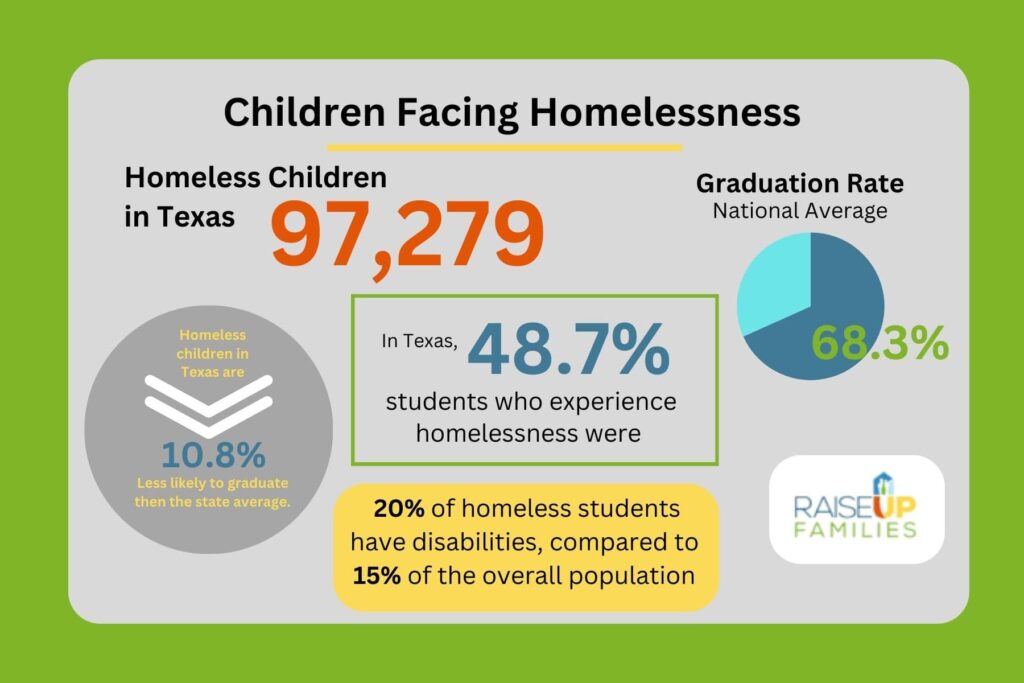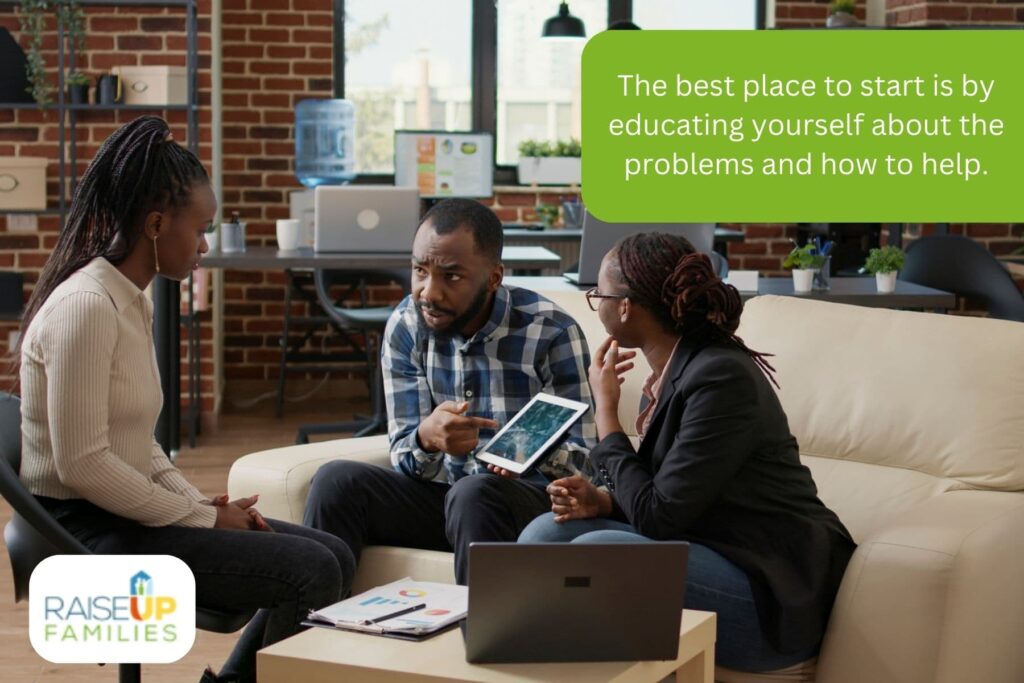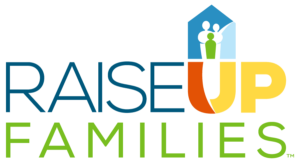If there’s something we can all agree on, it's that children deserve love, care, and the resources they need to thrive.
Sadly, many children aren’t getting those core needs met. Why is this?
Children’s lives can be disrupted for many reasons. Generational poverty, bullying, and even exposure to substance abuse are all too common culprits. But one factor often flies under the radar:
Frequent moves to new homes, communities, and schools.
Exactly how do temporary homelessness and frequent moves caused by financial instability affect children? And what can you do about it?
There is hope, and at RaiseUp Families, we care about spreading that hope into communities. Let’s learn how we can help children and families in creating a better future.
Homelessness is generally divided into four categories.
Episodic, hidden, and transitional homelessness are all forms of temporary homelessness. Hidden and transitional homelessness is most frequently faced by low-income and working-class families, which RaiseUp Families exists to support.

Now that we’ve defined our terms let's turn to the effects of temporary homelessness on children. While homelessness is hard on everyone, children are negatively affected in at least three areas:
With homelessness comes an increased possibility of familial separation, increased school mobility, and needing to stay in areas that aren’t safe. The stress caused by this lack of safety and stability creates a higher risk that children experiencing homelessness will develop emotional and behavioral problems. These include listlessness, indifference toward school, and anger toward parents. Boys are more likely to become aggressive, while girls tend to become depressed, passive, or withdrawn.
Because of the mobility that often accompanies homelessness, many children aren’t able to remain in the peer groups. Even if children can stay in school or connected to their friends, they often experience fear of rejection and shame for being unhoused. In a powerful video by the National Alliance to End Homelessness, children shared their experiences of being unhoused and needing to live in a shelter. One small boy talked about how he always denied living in a shelter when asked where he lived. He’d seen another child be bullied because he was homeless and was determined not to let this happen to him.
These understandable but detrimental responses can affect the child’s ability to develop meaningful relationships with peers and authority figures, further exacerbating relational struggles.
We’ve already mentioned increased school mobility, which often comes with homelessness. However, even if the family doesn’t need to move to a new area, homelessness always stresses a child’s education. Children are likely to skip school or be too stressed to focus.
Research on the impact of frequent moves and interruptions from COVID-19 has provided even more data on the negative effects of unfinished and interrupted education. For example, once children fall beyond academically, they tend to continue falling behind at greater margins unless given additional support. Without intervention, this can have a long-term negative impact on wages. One study showed that a single move can result in half a year of educational loss, and moving three or more times during childhood can decrease future earnings by as much as 52%.
Research on homeless children, specifically, shows that they are four times more likely to experience developmental delays when compared to other children, three times more likely to have emotional and behavioral struggles, and twice as likely to have learning disabilities. These realities have multiple contributing factors, including parental and personal stress, increased mobility, poor physical health, and lowered teacher expectations.
Here’s a chart to help visualize the impact of homelessness on children based on 2023 data.

Homelessness has a significant negative effect on children’s physical and developmental health. Contributing factors include lack of nutrition, dangerous situations, lack of access to medical care, and high levels of toxic stress. Toxic stress occurs when children experience sustained, high levels of stress. This can interrupt normal development in young children and contribute to the fact that 50% of homeless children under four years old experience developmental delays.
As the time of homelessness increases, so do the health risk factors. Studies from Children’s HealthWatch found that if children are homeless for over six months, they face higher chances of general health problems, hospital stays, and becoming overweight compared to those who never experienced homelessness or did so for shorter periods. Other reports have found higher rates of respiratory infections, fever, allergies, injuries, nutritional problems, and asthma in unhoused children.
The problem many children face isn’t hard to see.
Without effective interventions, the prospects of unhoused children are pretty dim. But interventions are effective, and there is hope!
In Texas, for example, graduation rates for children who have experienced homelessness are among the highest state averages in the country.
Here are four ways you can help children who have experienced homelessness or prevent them from having to face it at all!

For tips on ensuring you’re giving to a reputable nonprofit, read our guide “Three Steps to Choosing a Trusted Nonprofit.”
Conclusion
Temporary homelessness has a huge negative impact on kids. But there is hope.
At RaiseUp Families, we aim to assist families in becoming financially stable. We believe that no child should need to experience the disruption and fear of homelessness. We offer holistic care by empowering and supporting parents and partnering with other organizations. To read more about our approach, read our blog post, Why it Works: An Introduction to RaiseUp Families’ Intervention Model.
Here are a few additional blogs with helpful information for learning more about families in need and how to support them.
Thanks for spending time with us today! As always, feel free to contact us with any questions.
Here’s to a secure future for children and families!
